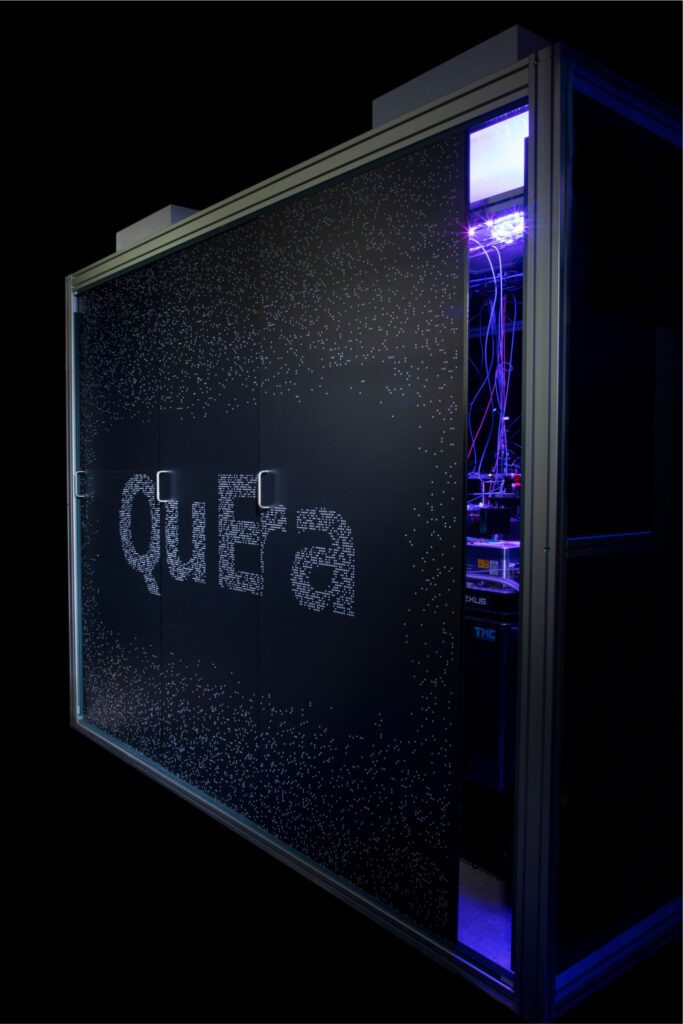Quantum
How the ‘miracle material’ graphene is redefining innovation
Reading time: 4 mins
An AWS deal with QuEra’s 256-qubit quantum computer has proved fruitful for enterprise customers
“It’s a little bit like trying to predict the impact of the internet on humanity in the early 1990s,” says Alex Keesling, CEO of QuEra, a neutral atom quantum computer start-up in Boston, USA. “The reality is that once the technology is out there, there’s a lot of things that we’re not even thinking about, that will happen.”
It sounds like the Field of Dreams approach – if you build it, they will come – but Keesling and the company’s chief commercial officer, Yuval Boger, are more pragmatic than that, at least when it comes to quantum computing strategy.

In November 2022, the business struck a deal to get its 256-qubit Aquila machine into the AWS Braket cloud-based quantum computing service. For Keesling and Boger this is all part of the plan, with both recognising that there is a growing fear among organisations that they may be missing out on quantum if they don’t get to grips with it now.
“We are on a mission to build useful, scalable, fault-tolerant quantum computers to accelerate innovation and that is a core principle that has carried us since before QuEra existed,” says Keeling, adding that the company recently struck a $40 million deal to sell a machine to Japan’s National Institute of Advanced Science and Technology (AIST).
“Even though it’s still a nascent market, AIST realised it has to start to train its people to develop applications,” adds Keesling. “So in two or three years, when there are even better machines out there, they are already experts on how to use the technology. It’s that kind of fear of being left behind a little bit.”
QuEra is a collaboration between the university superpowers of MIT and Harvard. Founded in 2018, the business is built on three main pillars – for its quantum computers to be useful, scalable and fault tolerant. The key to this is the company’s recent demonstration of its ability to build logical qubits, which allow for error correction to happen at scale.
“We have a goal to reach a scale and performance of quantum computation by 2026,” says Keesling. “That is truly beyond what can be predicted with any classical resources. And our goal here is to get to 100 logical qubits by 2026.”
For Boger, the focus is on usability, turning invention into customers and income. The AWS deal has already seen a number of businesses pay for time with the QuEra Aquila machine, according to Boger, who adds that the company can boast users from “all over the world.” He cites “Morgan, BMW, Airbus and BP,” as just some of the businesses “exploring what they could do with this machine.”


The company has also recently teamed-up with Moody’s to try and improve storm predictions and assess potential economic impacts on regions using quantum algorithms. It’s a far cry from the typical impression of quantum computing being six to 10 years away. Both Boger and Keesling recognise that their demonstration of logical qubits has knocked years off the fault-tolerant quantum computer timeline.
“We are now thinking maybe two years away before quantum is truly useful and as a result we’re seeing two trends in the market,” says Boger. “One is we see these enterprise customers coming to us and say let’s work together on developing say a two-year programme. They want something that they can put into production, to find better drugs or optimise delivery schedules or whatever it is.”
The second trend is the one where national programmes (such as AIST in Japan or the UK’s National Quantum Computing Centre) are buying machines today.
“A couple of years ago, if you had asked us if people will want to buy our machines we would have said ‘you must be crazy, why would they want to buy a machine? Maybe in three years it will be obsolete. Things change so quickly.’ But now people are finding that it’s closer to delivering business value, so they want control over who’s using it,” says Boger.
He gives an example, saying that last year BMW ran some 50-hour jobs on Aquila on AWS. This meant that if any other organisation had wanted to do something on Aquila, they would have had to wait 50 hours in the queue behind BMW.
“Quantum is closer than you think”
Yuval Boger, chief commercial officer, QuEra
But other factors are coming into play too, such as data security, especially among government agencies and having access to technology to train developers. It all builds pressure to own a machine.
“There’s a large number of factors that go into this and we’re seeing a lot of interest, both from the government and from the commercial side,” says Keesling. “Accessing quantum computers, partnering and the development of new applications and even owning the quantum computers themselves is becoming important to industry.”
Boger says QuEra is already working with some software vendors and claims applications will come. Much of the interest to date has been in solving specific problems – for example Aramco is using Aquila to develop algorithms to better analyse its seismic data for exploration.
“Quantum is closer than you think,” says Boger, with a nod to many of the other quantum computing vendors and technologies. “We can grow the pie together. Having multiple vendors essentially all saying quantum is closer, it’s no longer 10 years away – that’s good for investment and good for business.”
What is a logical qubit?
A logical qubit refers to a qubit that is encoded using a collection of physical qubits to protect against errors, according to QuEra.
The simplest distinction of logical qubit vs physical qubit is that a logical qubit is a cluster of physical qubits. Within a logical qubit, quantum error correction will be taking place among the physical qubits.
During the execution of algorithms, errors among the noisy physical qubits will be automatically detected and corrected. Therefore, whereas individual physical qubits are too noisy to be useful, with a logical qubit, quantum computing will become practical.
The ratio that is commonly given is that each logical qubit will require 1,000 physical qubits.
Take a look at Qiskit’s one-minute explainer video for more information.



Working as a technology journalist and writer since 1989, Marc has written for a wide range of titles on technology, business, education, politics and sustainability, with work appearing in The Guardian, The Register, New Statesman, Computer Weekly and many more.
Artificial Intelligence
Future Telecoms
Materials
Quantum
Reading time: 3 mins
Future Telecoms
Reading time: 9 mins
Artificial Intelligence
Quantum
Reading time: 5 mins
Materials
Reading time: 4 mins
Robotics
Reading time: 5 mins